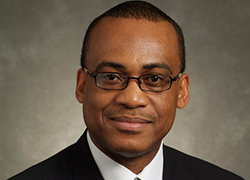DEVELOPMENTS
Interview with Joel Carter, CEO of Afghanistan’s Agricultural Development Fund
Jun 24, 2015
For generations, Afghanistan’s commercial farmers and agribusinesses had no way to borrow money to invest in their businesses. In 2010, the U.S. Agency for International Development (USAID), in partnership with the Afghanistan Ministry for Agriculture, Irrigation, and Livestock (MAIL), established the Agricultural Development Fund (ADF). USAID’s initial fund contribution of $100 million would be complemented by a technical assistance contract—the Agricultural Credit Enhancement Program—awarded to DAI.
The program ran into many obstacles, including Afghan banks’ unwillingness to participate, the Afghan government’s reluctance to register the ADF as an institution, and the requirement of many potential customers that their loans be Sharia compliant. But by the end of the project in February 2015, the fund had proven a resounding success with 202 loans to agribusinesses and intermediaries processed totaling $106 million, directly benefiting 35,000 end borrowers in all 34 provinces, and with a default rate of less than 5 percent.
In November 2012, the ADF was officially established as a development fund of the Afghan government. In June 2014, the ADF took another step toward becoming a standalone financial institution when Joel O. Carter, pictured below, was sworn in as the ADF’s first chief executive officer. Developments recently asked Carter about the ADF’s prospects for sustained, long-term success.

Q: In the face of the obstacles this project encountered from the start, how did DAI address the market for agricultural lending?
Carter: In two main ways. First, since Afghan banks would not work with us, we had to find other distribution channels, and so we established credit management units throughout the country as a way to manage risk. These were small offices of trained local Afghans who reviewed applications and disbursed and managed the loans. Second, we developed and instituted Sharia-lending products to meet the overwhelming demand of our customers. Sharia-compliant loans make up 40-plus percent of our portfolio.
Q: Who owns and oversees the Agricultural Development Fund?
Carter: It is owned by the Government of the Islamic Republic of Afghanistan and led by its High Council, chaired by his Excellency, Minister Zamir of MAIL. Other members include the Deputy Minister of the Ministry of Finance as deputy chairman; the MAIL Deputy Minister of Technical Affairs; a USAID representative; the Managing Director of the Afghanistan Chamber of Commerce; a nongovernmental specialist in banking and finance; and a nongovernmental specialist in agricultural affairs. Three members are from the government, three from the private sector, and one from USAID. The High Council also created committees—Audit, Credit, Governance, and Compensation—to assist in fulfilling its responsibilities.
Q: Why was the High Council set up this way?
Carter: This is to promote balance, transparency, and sustainability. Though the government owns the institution, it does not have the required two-thirds vote on the council to enact changes unilaterally.

Q: The ADF was stood up and then managed for four years by DAI and its USAID-funded Agricultural Credit Enhancement (ACE) Program, and it enjoyed great success. Now that the ADF has to stand on its own, what are the biggest risks to its near- and long-term success?
Carter: Financing agriculture in any economy is risky because of weather, pests, diseases, and others variables. Financing agriculture in a conflict environment, and considering most of our clients are in rural areas, compounds that risk. Another risk could be any compromise to the ADF’s governance structure.
Q: What safeguards did DAI/ACE build in to protect the operation, loan portfolio, and the fund itself?
Carter: DAI/ACE introduced strong credit policies and procedures. Our Technical Agriculture unit provides up-to-date market information and technical advice on every loan we finance. In addition to the loan officers who monitor the clients during the duration of the loan, we have an independent monitoring and evaluation team that ensures all loans are used for the intended purpose. Over the last three years, a cadre of Afghan professionals has trained locally and abroad to take the ADF into the future. We also have a solid governance structure. The High Council, as the highest decision making body of the ADF, is composed of seven members. Of the seven, only three are government officials. With this composition, we have attempted to avoid any undue influence by government.

Q: Why do you personally believe that the ADF will succeed over the long haul?
Carter: We serve a client base that fully embraces the fact that the Afghan government has their business interests at heart. We are the only financial institution willing—and with the expertise—to finance agriculture and its entire value chain. There is a demand for our products and services that we have barely begun to tap. But most of all, we have a team of dedicated Afghans who have the strong desire to make agriculture financing work in their country. It is this team of men and women that make me personally believe that what has been created today will last beyond us.

Q: What do the next 6–12 months hold for the ADF?
Carter: USAID recently awarded the ACE II program to DAI. This three-year follow-on activity constitutes evidence of USAID’s commitment to the ADF and its confidence in DAI. We will be working closely with the ACE II program to continue strengthening the institution, make adjustments to the business plan in response to recent contextual changes, and raise funding from other donors. Our goal is to raise enough funds to ensure that the ADF reaches an outstanding portfolio of around $170 million, which would guarantee its operational sustainability.